by Eric Meier
When attempting to identify a wood sample, it’s important to keep in mind the limitations and obstacles that are present in our task. Before starting, please have a look at The Truth Behind Wood Identification to approach the task in a proper mindset; I consider the linked article to be required reading for all those visiting my site with the intent of identifying wood.
1. Confirm it is actually solid wood.
Before proceeding too much farther into the remaining steps, it’s first necessary to confirm that the material in question is actually a solid piece of wood, and not a man-made composite or piece of plastic made to imitate wood.
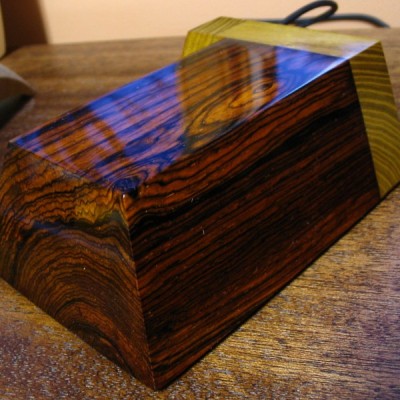
Can you see the end-grain?
Manufactured wood such as MDF, OSB, and particleboard all have a distinct look that is—in nearly all cases—easily distinguishable from the endgrain of real wood. Look for growth rings—formed by the yearly growth of a tree—which will be a dead-giveaway that the wood sample in question is a solid, genuine chunk of wood taken from a tree.
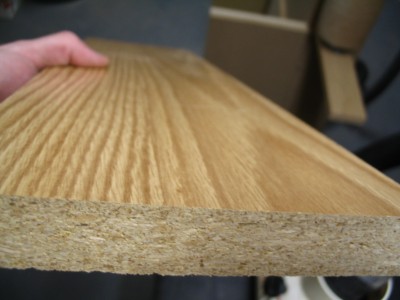
Is it veneered?
If you see a large panel that has a repeating grain pattern, it may be a veneer. In such cases, a very thin layer of real wood is peeled from a tree and attached to a substrate; sometimes the veneer can be one continuous repeating piece because it is rotary-sliced to shave off the veneer layer as the tree trunk is spun by machines. Assuming it is a real wood veneer with a distinct grain and texture—and not merely a piece of printed plastic—you may still be able to identify the outer veneer wood in question, but you should still realize that is it only a veneer and not a solid piece of wood.
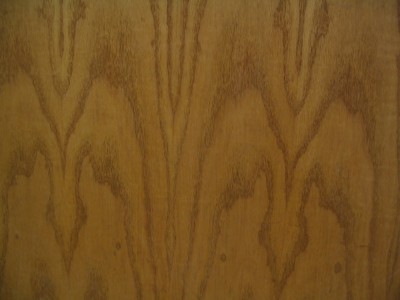
Is it painted or printed to look like wood?
Many times, especially on medium to large-sized flat panels for furniture, a piece of particleboard or MDF is either laminated with a piece of wood-colored plastic, or simply painted to look like wood grain. Many of today’s interior hardwood flooring planks are good examples of these pseudo-wood products: they are essentially a man-made material made of sawdust, glues, resins, and durable plastics.
2. Look at the color.
Some questions to immediately ask yourself:
Is the color of the wood natural, or is it stained?
If there is even a chance that the color isn’t natural, the odds are increased that the entire effort of identifying the wood will be in vain.
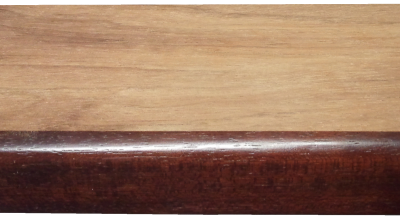
Is it weathered or have a patina?
Many woods, when left outside in the elements, tend to turn a bland gray color. Also, even interior wood also takes on a patina as it ages: some woods get darker, or redder, and some even get lighter or lose their color; but for the most part, wood tends to darken with age.
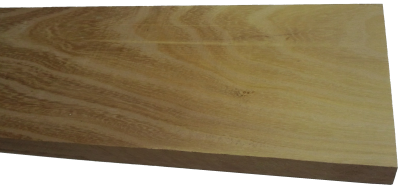
Is it possible to sand or plane the board to see the natural raw color of the wood?
The most predictable baseline to use when identifying wood is in a freshly sanded state. This eliminates the chances of a stain or natural aging skewing the color diagnosis of the wood.
3. Observe the wood grain.
If the wood is unfinished, then look at the texture of the grain. Ask yourself these questions:
Does the wood have an open, porous texture?
Most softwoods will be almost perfectly smooth with no grain indentations, while many common hardwoods have an open pore structure, such as oak or mahogany; though there are some hardwoods that are also smooth to the touch, such as maple.
Can you tell if the wood is quartersawn or plainsawn?
By observing the grain patterns, many times you can tell how the board was cut from the tree. Some wood species have dramatically different grain patterns from plainsawn to quartersawn surfaces. For instance, on their quartersawn surfaces, lacewood has large lace patterns, oak has flecks, and maple has the characteristic “butcher block” appearance.
Is there any figure or unusual characteristics, such as sapwood, curly or wild grain, burl/knots, etc.?
Some species of wood have figure that is much more common than in other species: for example, curly figure is fairly common in soft maple, and the curls are usually well-pronounced and close together. Yet when birch or cherry has a curly grain, it is more often much less pronounced, and the curls are spaced farther apart.
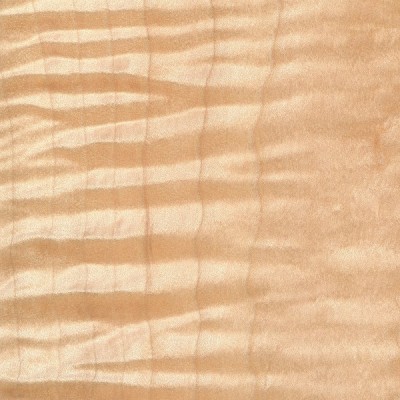
4. Consider the weight and hardness of the wood.
If it’s possible, pick the piece of wood up and get a sense of its weight, and compare it to other known wood species. Try gouging the edge with your fingernail to get a sense of its hardness. If you have a scale, you can take measurements of the length, width, and thickness of the wood, and combine them to find the density of the wood. This can be helpful to compare to other density readings found in the database. When examining the wood in question, compare it to other known wood species, and ask yourself these questions:
Is the wood dry?
Wood from freshly felled trees, or wood that has been stored in an extremely humid environment will have very high moisture contents. In some freshly sawn pieces, moisture could account for over half of the wood’s total weight! Likewise, wood that has been stored in extremely dry conditions of less than 25% relative humidity will most likely feel lighter than average.
How does the wood’s weight compare to other species?
Taking into account the size of the board, how does its weight compare to other benchmark woods? Is it heavier than oak? Is it lighter than pine? Look at the weight numbers for a few wood species that are close to yours, and get a ballpark estimate of its weight.
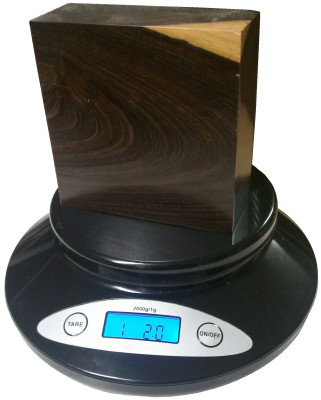
How hard is the wood?
Obviously softwoods will tend to be softer than hardwoods, but try to get a sense of how it compares to other known woods. Density and hardness are closely related, so if the wood is heavy, it will most likely be hard too. If the wood is a part of a finished item that you can’t adequately weigh, you might be able to test the hardness by gouging it in an inconspicuous area. Also, if it is used in a piece of furniture, such as a tabletop, a general idea of its hardness can be assessed by the number and depth of the gouges/dings in the piece given its age and use. A tabletop made of pine will have much deeper dents than a tabletop made of Oak. Additionally, you can always try the “fingernail test” as a rough hardness indicator: find a crisp edge of the wood, and with your fingernail try to push in as hard as you can and see if you’re able to make a dent in the wood.
5. Consider its history.
Many times we forget common sense and logic when attempting to identify wood. If you’ve got a piece of Amish furniture from Pennsylvania, chances are more likely that the wood will be made of something like black walnut or cherry, and not African wenge or jatoba. You might call it “wood profiling,” but sometimes it can pay to be a little prejudiced when it comes to wood identification. Some common-sense questions to ask yourself when trying to identify a piece of wood:
Where did it come from?
Knowing as much as you can about the source of the wood—even the smallest details—can be helpful. If the wood came from a wood pile or a lumber mill where all the pieces were from trees processed locally, then the potential species are immediately limited. If the wood came from a builder of antique furniture, or a boat-builder, or a trim carpenter: each of these occupations will tend to use certain species of woods much more often than others, making a logical guess much simpler.
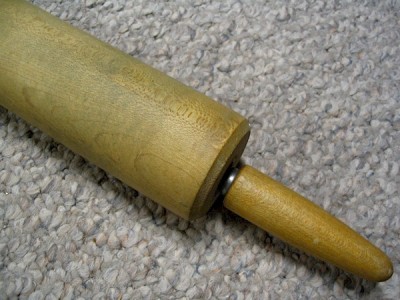
How old is it?
As with the wood’s source, its age will also help in identification purposes. Not only will it help to determine if the wood should have developed a natural patina, but it will also suggest certain species which were more prevalent at different times in history. For instance, many acoustic guitars made before the 1990s have featured Brazilian rosewood backs/sides, yet due to CITES restrictions placed upon that species, East Indian rosewood became a much more common species on newer guitars. (And this is a continuing shift as newer replacements are sought for rosewoods altogether.)
How large is the piece of wood?
Some species of trees are typically very small—some are even considered shrubs—while others get quite large. For instance, if you see a large panel or section of wood that’s entirely black, chances are it’s either painted, dyed, or stained: Gaboon ebony and related species are typically very small and very expensive.
What is the wood’s intended use?
Simply knowing what the wood was intended for—when considered in conjunction with where it came from and how old it is—can give you many clues to help identify it. In some applications, certain wood species are used much more frequently than others, so that you can make an educated guess as to the species of the wood based upon the application where it was used. For instance, in the United States: many older houses with solid hardwood floors have commonly used either red oak or hard maple; many antique furniture pieces have featured quartersawn white oak; many violins have spruce tops; many closet items used aromatic red cedar, and so forth. While it’s not a 100% guarantee, “profiling” the wood in question will help reduce the number of possible suspects, and aid in deducing the correct species.
6. Find the X-Factor.
Sometimes, after all the normal characteristics of a sample have been considered, the identity of the wood in question is still not apparent. In these instances—particularly in situations where a sample has been narrowed down to only a few possible remaining choices—it’s sometimes helpful to bring in specialized tests and other narrower means of identification.
The following techniques and recommendations don’t necessarily have a wide application in initially sorting out wood species and eliminating large swaths of wood species, but will most likely be of use only as a final step in special identification circumstances.
Odor
Believe it or not, freshly machined wood can have a very identifiable scent. When your eyes and hands can’t quite get a definitive answer, sometimes your nose can. Assuming there is no stain, finish, or preservative on or in the wood, quickly sand, saw, or otherwise machine a section of the wood in question, and take a whiff of the aroma.
Although new scents can be very difficult to express in words, many times the scent of an unknown wood may be similar to other known scents. For instance, rosewoods (Dalbergia spp.) are so named for their characteristic odor that is reminiscent of roses. Although difficult to directly communicate, with enough firsthand experience scents can become a memorable and powerful means of wood identification.
Fluorescence
While certain woods can appear basically identical to one another under normal lighting conditions, when exposed to certain wavelengths—such as those found in blacklights—the wood will absorb and emit light in a different (visible) wavelength. This phenomenon is known as fluorescence, and certain woods can be distinguished by the presence or absence of their fluorescent qualities. See the article Fluorescence: A Secret Weapon in Wood Identification for more information.
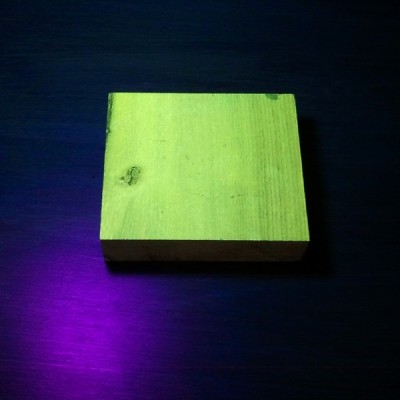
Chemical Testing
There are only a small number of chemical tests regularly used on wood, most of which are very specialized and were developed to help distinguish easily confused species with one another. They work by detecting differences in the composition of heartwood extractives. A chemical substance (called a reagent) is usually dissolved in water and applied to the wood surface: the surface is then observed for any type of chemical reaction (and accompanying color change) that may occur. Two of the most useful are the tests that are meant to separate Red and White Oak, and Red and Hard Maple.
Heartwood Extractives Leachability
Sometimes a wood species will have heartwood extractives that will be readily leachable in water and capable of conspicuously tinting a solution of water a specific color. For instance, the heartwood extractives contained in osage orange (Maclura pomifera) contain a yellowish-brown dye that is soluble in water. (This can sometimes be observed anecdotally when the wood is glued with a water-based adhesive: the glue’s squeeze-out is an unusually vibrant yellow.)
In a simple water extract color test, wood shavings are mixed with water in a vial, test tube, or other suitably small container, and the color of the water is observed after a few minutes. If the heartwood extractives are leachable by water, then a corresponding color change should quickly occur.
In addition to osage orange (Maclura pomifera), merbau (Intsia spp.), and rengas (Gluta spp. and Melanorrhoea spp.) are also noted for their readily leachable heartwood extractives. Because this property is quite uncommon, it can serve to quickly differentiate these woods from other lookalikes.
7. Look at the endgrain.
Perhaps no other technique for accurate identification of wood is as helpful and conclusive as the magnified examination of the endgrain. Frequently, it brings the identification process from a mostly intuitive, unscientific process into a predictable, repeatable, and reliable procedure.
Looking at the endgrain with a magnifier shouldn’t be a mystifying or esoteric art. In many cases, it’s nearly as simple as examining small newsprint under a magnifying glass. There are three components necessary to reap the full benefits contained in the endgrain:
I. A prepared surface.
When working with wood in most capacities, it becomes quickly apparent that endgrain surfaces are not nearly as cooperative or as easily worked as face grain surfaces. However, in this case, it is absolutely critical that a clear and refined endgrain surface is obtained.
For a quick glance of a softwood sample, a very sharp knife or razor blade can be used to take a fresh slice from the endgrain. However, in many denser species, especially in tropical hardwoods, one of the best ways to obtain a clear endgrain view is through diligent sanding. It’s usually best to begin with a relatively smooth saw cut (as from a fine-toothed miter saw blade) and proceed through the grits, starting at around 100, and working up to at least 220 or 320 grit, preferably higher for the cleanest view.
II. The right magnifier.
It need not be expensive, but whatever tool is used to view the endgrain should have adequate magnifying power. In most instances, 10x magnification is ideal, however, anything within the range of 8 to 15x magnification should be suitable for endgrain viewing. (Standard magnifying glasses are typically in the range of 2 to 4x magnification.)
These stronger magnifiers, sometimes called loupes, usually have a smaller viewing area than standard magnifying glasses. Fancier models—with built in lights, or larger viewing surfaces—are available at a premium; but the most basic models are usually only a few dollars.
III. A trained eye.
The third element that constitutes a proper endgrain examination is simply knowing what to look for. In analyzing the patterns, colors, shapes, and spacing of the various anatomical features, there is a veritable storehouse of information within the endgrain—all waiting to be unlocked. Yet, if these elements have not been pointed out and learned, the array of features will simply seem like an unintelligible jumble. The discipline of recognizing anatomical endgrain features is not easily summed up in a few sentences or even a few paragraphs, but it is nonetheless critical to the identification process. To this end, an in-depth look should be given to the various categories, divisions, and elements that constitute endgrain wood identification on the macroscopic level. (In this regard, macroscopic denotes what can be seen with a low-powered, 10x hand lens—without the aid of a microscope—rather than simply what can be seen with the naked eye.) Because the anatomy between softwoods and hardwoods is so divergent, each will be considered and examined separately:Still stumped?
If you have a mysterious piece of wood that you’d like identified, you’ve got a few options for next steps:USDA’s Forest Products Laboratory
You can mail your physical wood samples to the Center for Wood Anatomy Research.
Pros:
- Free
- Professional wood identification
Cons:
- Only available to US citizens
- Slow turnaround times (up to a month or more)
- Limited to three IDs per year
See their Wood ID Factsheet for more info.
Alden Identification Service
You can mail your physical wood samples (even small sections taken from antiques) to Alden Identification Service.
Pros:
- Professional wood identification
- Faster turnaround times (ranging from a few days to a week or two)
Cons:
- Paid service
See their ordering page for more info. (Note that Harry Alden has written several books while at USDA, including both Hardwoods and Softwoods of North America.)
Ask for help online
If the wood ID is merely a curiosity, or non-critical, you can post pictures of the wood in question.
Pros:
- Free
- No need to send physical samples
Cons:
- Greatly limited by the quality of the pictures provided
- Extra work usually required to get adequate clarity in photos
See article of Common US Hardwoods to help find the most commonly used woods.
Get the hard copy
 If you’re interested in getting all that makes The Wood Database unique distilled into a single, real-world resource, there’s the book that’s based on the website—the Amazon.com best-seller, WOOD! Identifying and Using Hundreds of Woods Worldwide. It contains many of the most popular articles found on this website, as well as hundreds of wood profiles—laid out with the same clarity and convenience of the website—packaged in a shop-friendly hardcover book.
If you’re interested in getting all that makes The Wood Database unique distilled into a single, real-world resource, there’s the book that’s based on the website—the Amazon.com best-seller, WOOD! Identifying and Using Hundreds of Woods Worldwide. It contains many of the most popular articles found on this website, as well as hundreds of wood profiles—laid out with the same clarity and convenience of the website—packaged in a shop-friendly hardcover book. 


Why I will no longer be replying to every wood ID request I’ve replied to literally thousands of wood ID requests on this site over the past 13+ years, but as the site’s popularity has grown, so has the time demands for ID on a daily basis. (Contrary to what some may seem to think, I am not some all-knowing wood wizard that can instantly ID your wood. It can actually take me a long time to sift through a lot of different resources.) Over the past few years, my backlog of pending wood species to be added to the… Read more »
Original hardwood in 1965 house in Charleston sc. trying to figure out type of wood flooring. I am going to sand and refinish but I have a space that didn’t have hardwood under the carpets..Can you help?? Thank you!
I would be very grateful if you could identify the wood that this piano is made of. The Model is a Knight K15, manufactured in 1967.
It looks to be walnut. Based on your location, I’d say it’s most likely Juglans regia, commonly called English walnut.
Many thanks – much appreciated.
hello, could you please give a wack at identifying this door handle, from an Outback Steakhouse. Lightly sanded with a coat of polyurethane. I would greatly appreciate any help. ??
Oak
Thank u ?? so much. I really appreciate you. I get a lot of red oak, when doing a search . Is that what you think this is or maybe white?
From the limited view I can see of it, it looks more like red oak to me, but I can’t be 100% sure.
Thank you for the help. I really appreciate you. Have an awesome day.
Hi Eric,
thanks for the article, it is very informative! Hoping you can help identify the wood type used in an old family desk. It’s about 150 years old and originally came from New England. It’s been stained, but I’ve also included a photo from the inside.
Hello Eric, I have failed to identify exactly what this hardwood flooring is as I need to match it to finish the flooring now I’m short!! Any chance your trained eye can identify. Its in the UK south and out of a 1920’s house. I’m thinking Rosewood, teak or mahogany? Could you cast your opinion. Many thanks, would help my search.
Steve London
Definitely not teak or rosewood. It very much resembles mahogany, though as to exact species I can’t tell.
Hi Eric, hoping you can help again with identifying what this chair is made of? I’ve taken as many, hopefully, helpful pictures as I can. There are 4 of these ladder back chairs which went around the dining table you helped identify a few weeks ago. Many thanks once again, Christine
It looks like several different woods have been used, so it would be very hard to just specify one wood species. The bottom panel looks like a softwood plywood (possibly pine), while it appears there’s hardwood frame along the edges of the seat. I can just make out some fairly conspicuous rays, so that might suggest something like oak or beech. The legs also look like a softwood, though solid instead of the plywood for the seat bottom.
Many thanks once again Eric
Can anybody please tell what type of wood these floor boards are. We just sanded them back
Hello
I am very new to this and i found myself making a countertop redwood
I would like the wood master identify this wood and if you can let me know what is price range
tips and guide for woods wholesale and resin is well appreciated
NEED HELP IDENTIFYING WOOD USED ON THIS OLD HOUSE IN SOUTH CAROLINA,IT’S ALL WOOD INSIDE AND OUT,,IS IT WORTH RECLAIMING THE WOOD,,AND HOW OLD DOES IT LOOK TO BE,,NOTICED A FEW ROUND HEAD NAILS BUT MAINLY CUT NAILS WAS USED TO BUILD,,THANKS IN ADVANCE
Hi Eric, thank you for the great article. Based on your article and other sources I believe I have identified #1 as purpleheart, #2 Mahogany and #3 as Rosewood. The #2 is extremely heavy but I did not water test to see if it floats or not. Not labelled wood is maple ( back side of the hardwood flooring). All three pieces came from a cabinet-making shop.
I would say #1 correct. #2 definitely doesn’t look like genuine mahogany, check endgrain. Same with #3, it doesn’t match endgrain of true rosewood in Dalbergia genus. Perhaps it is pau ferro https://www.wood-database.com/pau-ferro/
Thank you, Eric, regarding #2 I have been looking again, it also looks like Teakwood? https://www.wood-database.com/teak/
I’m fairly sure it’s not teak either. I’d recommend looking closely at the endgrain image you’ve taken of the wood. It is diffuse porous, with a fairly high concentration of pores. This is actually a pretty common pattern with tropical hardwoods, so it’s a tough one to ID. But teak has larger, less frequent pores, and they’re usually arrange in rings or at least in a semi-ring-porous pattern.
Thank you very much!
Hello. I’m looking to identify what type of wood my hutch is. I would like to stain it but need some info before I sand and stain. My uncles made this in high school in the 70s in Alabama
Looks like some plywood with some rotary cut veneer as the face ply. Based on your location I’d guess Southern yellow pine, though it may also be Douglas fir.
Could you please tell me what type of wood this is? The x2 tables and chairs, thank you kindly
Hi Eric, I’m not sure why my enquiry is skipped. Is it because you not sure either? Do you need me to get better pictures? Please help as I need to sell but I’m not sure what to add to the description for the sellers
Yes, I have no idea. Australia is sort of its own world of wood, so I can’t be of much help here, unfortunately.
oh i see, thank you kindly
i just found that the last 2 picture is Jarrah wood.
Hi! Looking for identification of this wood used in the risers of a front hallway in a 1910 greystone two flat building in chicago. I just sanded away the top 4 or so layers of paint. It’s hard to the touch, doesn’t dent with finger nail test.
Looks like hard maple.
thank you so much! do you suppose it’s original ?
Hi
I was wondering if you can help identify this wood.
I can see resin canals throughout the piece, which would strongly suggest a species of pine.
Thank you. Much appreciated :)
Hello, I am trying to identify this wood flooring. The house was built in 1945 in north Iowa and I am guessing that it is original. I sanded off the finish in one area. When I smelled the sanded area, it reminded me of cedar but was certainly more faint. I’m not at all certain of the cedar smell. I am able to dent the wood with my fingernail which I thought was a little odd for it being flooring.
Yes, definitely a softwood. Most likely a species of hard yellow pine, though Douglas fir is also a possibility.
What kind of wood and table is this.
Hi. Do you know what kind of wood this is? I’m assuming mango wood but I’m unsure. It feels light but I’m not sure what to compare it to. There’s almost a green tint on the front drawer in certain light.
I see what you mean with the greenish tint on the front. Mango certainly is a reasonable guess. But I can’t tell for sure from the pics. Since mango is a diffuse porous tropical hardwood, there are probably hundreds of other woods that would also fit that description, so I’d really need to see a closeup of the end grain to have a higher confidence level of ID.
Unsure what type of wood this would wood be. Assuming it’s a 1980’s variety
No pics?
See the pictures ?
Seems to be four totally different woods, though I can’t make out enough details for ID. The first one with the tape measure, it resembles oak (or possibly ash), though it may actually just be an artificial wood surface. Would need to see closer pics of the grain to make out more details.
I have this antique settee, and I was hoping you could identify the wood. Thank you.
I can’t tell from the pics, the wood appears to have a very dark stain that obscures the grain.
Hi there,
A question from the UK – I’m in the process of renovating our old stairs, and wanting to inset some replacement sections where there is a fair bit of woodworm damage. I’m trying to identify the existing wood, so I can match some new/reclaimed pieces – any suggestions? The stairs have been there potentially for over a 100 years, the wood has a slight reddish tinge and a relatively pleasant smell when worked! Pretty sure it’s a hardwood.
Any suggestions gratefully received!
Please try to re-attach pics, or downsize them, as they didn’t come through the first time.
Here they are again – thanks
Looks like a ring-porous hardwood of some sort. Unfortunately, I’m not familiar with what would’ve been common on stairs in your area. The little jagged lines in between the growth rings does look similar to elm, but that’s just an educated guess.
Hi Eric, Thanks for your response – I’ve done some research and most people seem to agree they’re elm too. So, I visited the local reclamation place and they just happened to have a batch of 19th century elm floorboards! A bit ‘wiggly’ and quite expensive, but I secured a small amount, enough to finish my project. Fingers crossed!
Hi, Eric. I am so happy to find this website cause I am having difficulty identify what did my fence contractor actlly installed in my yard in July this year. The contract promised providing premium cedar. Within 2 months, this fence is already warped and bended everywhere. It has been quite rainy since Septemer here in BC Canada, but cedar suppsed to be weather resistant. That is why I strongly doubt if these panels are made of cedar wood. It would be against the contract law if mispresentation was acted. Please help! Thanks.
Bending and warping would not necessarily imply that it was not cedar, but just that perhaps the wood wasn’t fully dried when the fence was installed. Cedar should have a fairly pungent scent if you sand the raw wood. Assuming the fence is unfinished/raw wood, is it possible to take a piece of sandpaper and roughen up a small surface of the wood and check for a scent?
Thanks so much for replying. I just had another fence expert to check the fence and was told they are actually cedar panels. The extreme heat domes in Summer this year played a big roll on causing the warps. Will repair them back to normal shape. Thanks!
Hi Eric, I am thinking of renovating my wooden floor that up until yesterday I thought was just some MDF board with a decorative cover. To my surprise I found rings on the end cuts when removed the end cover . Now I am curious what wood it might be. Doing the fingernail test, I cannot make any marks on the end or side cuts, so thinking it is oak (house was built in 1930s although I am not sure these are the original floors). Pictures attached show surface (1 and 2), end grain (3) and side grain(4), the latter… Read more »
Yes, it does look like oak.
Thank you Eric
Hi, I have obtained some wood from a local orchard in Quebec. Most of of it was apple wood but I was also given 4 pieces that look like this. They are light and have a strong smell that is slightly unpleasant and a bit like glue. From looking through the website, I was thinking of Black Ash. Any idea what this could be? Many thanks.
At least it is a ring porous hardwood, which definitely narrows the candidates down. I can also see some fairly conspicuous rays in the piece, which is interesting. Unfortunately, there are a number of possibilities, and you’d really need to get a very clean, closeup picture of the endgrain to have a better chance at ID.
Thanks for the reply. Here are some slightly cleaner shots of the end grain.
Well, glad you posted those closeups, as it’s clearly not even a ring-porous hardwood, but looks to be diffuse porous. That would rule out ash. The rays on the facegrain remind me a little of beech, but the color and weight seem to be off, so I guess I’m stumped!
If anyone is still playing “Name That Wood”… or at least Name That Finish…
Wooden desk, unknown age but at least 50 years. The wood is probably not identifiable from this picture; definitely stained at least (much lighter where worn or on underside), and the dark lines and speckles appear to have been painted on rather than actually being a feature of the wood.
My question is: assuming those markings were indeed added at the factory, were they trying to suggest a fancier wood… or is this just some maker’s idea of an Aunt Eek Style finish?
Thanks in advance!
The home has original hardwood floors from 1935, built in the heart of San Antonio Texas. We suspect it might be walnut but we are unsure!
Those boards have very wide rays, so it’s not walnut. Looks like oak to me. Old growth oak actually tends to be lighter than new stuff because of how open and porous the growth rings are (which are more prevalent and closer together in older pieces), so in this case, older oak wood tends to be lighter weight than new stuff.
I have a house in Arkansas built in 1960 with an all wood paneled office. It is solid hardwood and the same wood was used for the kitchen cabinets. It is stained (it’s darker in the kitchen) I am wondering if it knotty pine perhaps. We pulled quite a few nails out with a bit of difficulty.
It’s a softwood of some sort, so pine is a reasonable guess. But I can’t tell for sure without getting a clear, sanded, closeup view of the endgrain to check for resin canals.
Japanese Tamo Ash?
Hi. I found this old desk insert at an estate sale. The bottoms of the drawers look as if they are bamboo, and there is tis wonderful veneer on the outside, which I would like to identify. I have a piece to replace on the back that is missing. (does not have to be figured)
Thanks
Yes, it does look like tamo ash to me as well. Looks like there is a medium colored stain applied to the wood as well, which sort of accentuates the pattern even more. Looks like a pretty unique find!
Thanks!
Wow, that wood is beautiful!
Victorian tilt-top pedestal table: please can you help identify the wood of the table top and the wood of the pedestal (I think it is different) Thank you.
Can anyone offer some help, please
Can you get a closer picture of the wood grain on the table top in particular? I can’t make out enough detail in the existing pics.
Thank you for your reply. I hope this photo is better.
Here’s another photo
The ribbon stripe figure suggests it is a tropical hardwood species with interlocked grain. Possibly a type of mahogany or similar-looking wood.
Thank you for your input. Fascinating website
I have this antique wardrobe from an estate – the previous owner says early 1900 dutch. Are you able to tell me what wood it’s made from? I appreciate your opinion.
Sorry, I can’t tell from those pics. The wood doesn’t have a lot of grain features that stand out, and it appears to be stained so as to even further obscure any natural grain / patterns in the wood.
Hello, have a house built in WNY, 1856. Not sure when wood flooring was installed. Was refinished and clear coated. Trying to match to extend into another room.
Given the age and location, I’d say it’s most likely a hard pine, what some might call antique heart pine.
Hi, wonder if you can help identify the wood used in this drop leaf table. We believe it may have been made by Priory or JayCee in the UK sometime in the 60s. It’s fairly heavy but not as heavy as another table we have of similar construction that is Old Charm. We know that one is oak but the grains look different to our eye. Any help gratefully received:
It’s definitely a ring porous hardwood, and oak would certainly be a likely candidate. But it’s hard to make out many (if any) visible rays from the photos. It may simply be a consequence of the distance of the photos (is it possible to get a closer pic?) that no rays can be seen, but if there are indeed no visible rays, that would point more heavily toward ash rather than oak.
Thank you Eric in taking the time to reply. I’ve taken some more photos today which may help further? As the top and visible legs have been french polished I’m supplying photos of the underneath as well as the bottom of the gate legs plus anything else that is not polished.
Thanks, I can see the rays in these pics, so that would strongly suggest it is oak.
Thank you for your help Eric.
Hi,
I would like to buy a desk that is close to this wood/stain as possible… Can you identify it/Give suggestions to a close match. Thank you!
That looks like black cherry to me. Very often cherry pieces have sapwood (a lighter-colored portion of the wood) mixed in , but these examples are just about 100% heartwood, so you’d probably want to specify that if you are trying to get a match to this look. (You can see a tiny amount of the lighter colored sapwood in the fourth picture you posted, it’s on the piece in the upper right drawer front, just below and to the right of the black drawer handle.)
Thank you so much for your help!
Hi! Just purchased a table and am sanding it down. I am not sure what kind of wood I’m dealing with. It’s not perfectly sanded yet but I’m hoping it’s enough that you’ll be able to tell? Pretty heavy but not exceptionally so.
I can’t tell the species, but it appears to be veneered in a sunburst pattern. I would be very careful in sanding veneer so that you do not accidentally sand through the top layer of veneer. Possibly a closer image of the wood grain may be more helpful for ID, but it doesn’t stick out as something immediately identifiable.
Hello, I bought this from a charity shop but they do not know what type of wood it is. It’s heavy and looks like solid wood. End grains +. Dovetail joints +. Any clue on what wood it may be would be really helpful.
The top counter surface grain looks like oak. Seeing that you’re in the UK, if it is really heavy and hard its probably oak. You can always sand down an inconspicuous area to test.
It’s Oak
Thank you so much Kevin and Dave. Since it was a perfect match to my oak fireplace, we too thought it must be oak as it’s the same colour and grains. Very convinced now, thanks.
Please help identity! Any advice is appreciated. Thank you!
Looks like a softwood of some sort. With softwoods, you’d really need to get a clear closeup look at the endgrain and check for resin canals to get a better ID in narrowing things down. https://www.wood-database.com/wood-articles/softwood-anatomy/#resin_canals
Hello Eric! I purchased some reclaimed wood here in Cleveland Ohio, and I’m told they were originally office paneling from Terminal Tower in Public Square in downtown Cleveland. The tower was built in the 1920s/30s and the wood may have been from that era. They are in large 10 foot panels with a separate wood surround. They all seem to be similar in weight. They seem heavy like oak, but I have no idea what wood they are, and neither did the people I got them from. Hoping you can help! Many thanks.
If you can clean up the endgrain a bit more and get a clear, focused shot, I’d be able to get a pretty good idea of what you’ve got. However, there’s just not enough detail in the current pics to go off of at the moment.
Hi , I have got this wood plank from an industrial store.. I guess it was used as reinforcement in a shipping crate for heavy machinery. It is dry and heavy, see pics attached. original appearance was dark grey, the picture shows the real color after passing it few time in the drum sander.
Thnaks for help :-)
I’m not familiar with NZ woods, but it does appear to be a softwood. If it were from US, I’d say it was a type of pine, since I can see dark streaks that look like resin canals on the side grain. Not sure what native species would have this appearance. Perhaps it is just a plantation species like radiata pine?
Thanks Eric, I thought about it was a type of conifer but the weight it seems out of range. I put the plank on a scale and measured carefully the dimensions to calculate density which is 732kg/m3 (or 45lbs/3ft). The wood is really dry so it seems a bit out of range for a Pine species. Tonight I will take a close pic of the endgrain and post it to you . I should also be able to measure the dryness.
Endgrain pic would be helpful. Depending on humidity level, that density might not be totally unheard of for a softwood.
See endgrain pic, moisture content is about ,10%
Okay, thanks, it’s definitely a softwood, and it looks to be a species of hard pine. Guessing a plantation species of some sort, possibly Caribbean pine or a species of southern yellow pine.
I received this block of wood as a gift, it’s 38,5 x 28,5 x 15 cm and weighs 16.5kg (15″ x 11″ x 6″, 36 pounds). The friend who gave it to me said it’s from a construction site. He had it for 20 years, so I cleaned it up a bit, but it has no distinct odor.
Given the large size and fact that it was from construction site, my best guess would be ekki. Hard to tell for sure though — even though the endgrain is clear in your pics, it’s from a bit of a distance so hard to see the individual pores. But overall, ekki seems to be a relatively good fit with given info. https://www.wood-database.com/ekki/
That seems like a great fit. Thank you!
1830’s-40’s stair risers. Dense wood smells kind of sweet.
Looks to have a very dark stain on it, so I can’t really see any of the wood’s grain.
The image attached shows 170 yr old patina that I just wiped the dirt from.. I don’t think it is stain. I am petty convinced it is the same as this newel and banister. Pictures 2 & 3. Btw, the floor is ash.
The second picture shows a distinct ray fleck, which would really only be that conspicuous in hardwoods, so now I am completely confused. The other images look like a softwood.
Hi! I’m trying to identify the type of wood pictured here. It is a table my great grandfather made in his high school shop class in Evansville, Indiana in 1925. It previously had been stained a dark color and then painted over. I have sanded down as much as I can but I am sure the color is unhelpful. The end cuts may provide a better idea? It is very heavy and does not seem to be a soft wood as I cannot indent with my fingernail and it doesn’t have many scratches for being so old.
It looks like a ring porous hardwood. Usually, oak is the most commonly seen ring porous wood for furniture, but I think in this case, since I can’t really see any rays very well, I’d be more inclined to say it was ash.
I just ripped down a 100 year old barn panel that was 20” wide. It light in weight. The 2” piece in the picture is an off cut of what it looked like before plaining. The 4.5” went through the plainer. The wood came from Missouri or Kansas. I can’t tell what type of wood it is. Any help would be great. Thanks in advance
Please try to reattach pic, it didn’t come through.
Hi I need to identify thins wood and I am hoping you could help! It has a smell, just not sure how to describe it besides ‘woody’
Can you tell me what kind of wood this desk is made of? Thank you!
No, it definitely doesn’t look like anything native to the US/Canada. Where are you located? Or where did the desk come from?
Bought it from a friend, said they paid $600 for it. We paid $100. We are located in fl.
This is absolutely BEAUTIFUL! I can see why you bought it. Just gorgeous!
Hi. I’m trying to gain information on a sideboard family heirloom. My guess would be pine or oak. It appears to have differing patterns. Any assistance you can provide would be greatly appreciated.
Looks like oak.
Hello, I have this Singer sewing machine from 1902 and I want to varnish/polish it but don’t know what wood it is? Someone suggested teak?
Very hard to make it the details in the picture, but if I am seeing the front grain correctly, it looks to have very large ray flecks. If this is the case, it’s probably quartersawn oak. Based on your location, it would more than likely be Quercus robur (English oak).
Could you possibly identify this timber? Thanks
I can’t tell from the picture. Maybe someone from the UK can chime in and offer a suggestion as to what may be commonly used as parquet flooring over there.
This was a great page to read for me to better identify wood types but still I’m an amateur. I love to craft n use branches n wood I find exploring.. I wish I knew what kinds of wood I have collected.. unfortunately u may not be able to identify the ones I’ve painted already. I’ll send pics, thanks for help n info.
Hi, sorry, I can’t tell from sticks. Usually a clear view of the wood’s grain is needed, and ideally a clear sanded closeup view of the endgrain as well.
I bought this coffee table at a local TJMaxx/ Homegoods. Its fairly heavy and it had this greyish tone. Trying to get rid of the grey and get it to a lighter natural wood color. Do you have any idea what wood this is and how can i get the grey out? 1st picture is how I bought. 2nd picture after a second stripped and multiple sanding.
That wood has been artificially distressed, possibly with gray paint and/or stain. Unfortunately, part of the distressing is that they left the saw marks and other machining “defects” in the wood as well, so you’d have a very difficult time getting all that cleaned up without totally sanding it down to bare wood. Even with that, with those deep gouges, I think it would take a lot of wood to get it uniformly lighter in color. If you don’t mind leaving some spots darker, you may just try applying paint stripper and seeing how much finish you can peel off… Read more »
Moving into a new house. We got a sample of the hardwood floor but they could not tell us the species. We want to put in the same wood upstairs. Thank you!
It looks like oak, probably a type of white oak.
It didn’t attach pictures to the last comment
What kind of wood is this
I’m sorry I can’t tell from those pics.
Thank you for the information. I am working on refinishing a boat ..think it is made in the 80s in New England area..wondering what this wood is for sure..my brother is thinking red oak
It’s not oak. It’s a softwood, possibly a species of hard yellow pine, or Douglas fir.
Thank you for the information..appreciate it! Just wanted to note – that is the natural color – reddish – would that be true of yellow pine of Douglas fir?
That is regular Plywood, maybe birch or pine